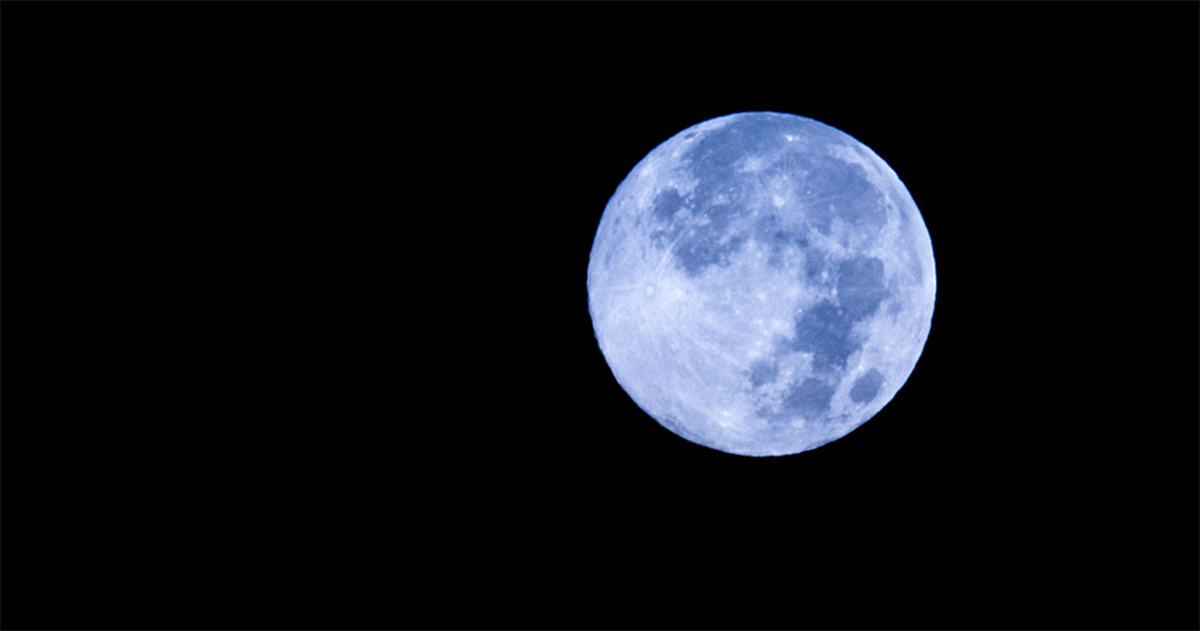A full blue moon will be visible to everyone on Earth on Halloween in 2020.
But no, the moon on Saturday, Oct. 31, will not be blue.
The idea that a blue moon is blue is a misconception.
What is a blue moon?
A blue moon occurs when two full moons appear in a single month -- a rare occurrence.
This is the contemporary understanding of what a blue moon is.
The other definition is older and considers a blue moon to have occurred if there are four full moons in three months.
And it specifically refers to the third full moon in a season that has four full moons.
To reiterate: A seasonal blue moon is an older definition, and this type of blue moon occurs about every 2.5 years.
More recently, the term blue moon has been applied to the second full moon within a single calendar month.
This current understanding is believed to be a 1946 misinterpretation of the original definition, which was used as a source for a nationally syndicated radio programme in the United States in 1980.
How to count
There are roughly 29.5 days between full moons.
This makes it unusual for two full moons to fit into a 30- or 31-day month.
This means that February will never have a Blue Moon.
How rare is a blue moon?
This phenomenon occurs on average roughly every two-and-a-half to three years.
Where did the blue moon get its name?
It is widely agreed that blue moon got its contemporary name from the Farmer’s Almanac.
The term "blue moon" has been around for 400 years though.
1946 article mentioned the naming of blue moon
An article, "Once in a Blue Moon", was written in a 1946 issue of Sky and Telescope magazine.
The piece referred to the 1937 Maine Farmer’s Almanac’s analysis of the rare second full moon.
The article mentioned that there were 13 full moons in a year, in seven out of 19 years.
It said: "This gives 11 months with one full moon each and one with two. This second in a month, so I interpret it, was called Blue Moon."
What are the names of the upcoming full moons in 2020?
The rest of the full moons expected for 2020 are named the following:
Sep. 21 – Corn moon
Oct. 15 – Harvest moon
Oct. 31 Blue moon
Nov. 30 – Beaver moon
Dec. 29 – Cold moon
The almanac followed certain rules for what to call each moon.
The last full moon of winter, for example, had to fall during Lent and it was called the Lenten Moon.
The first full moon of spring was called the Egg Moon -- or Easter Moon -- and had to fall within the week before Easter.
So, when a particular season had four moons, the third was dubbed a Blue Moon, so that the other full moons could occur at the proper times relative to the solstices and equinoxes.
In other words, the "Blue Moon" name was given to the "extra" moon so as not to disrupt the usual cycle that farmers had gotten used to, as full moons were named based on the harvests and time of the year.
How to see the Halloween blue moon 2020
You wouldn't have to do much to see the upcoming blue moon -- as long as the skies are cloudless.
What’s rare about this particular full moon is that it will be visible around the world.
And for it to happen on Halloween, it only happens once every 19 years.
This pattern is known as the Metonic Cycle.
We deliver more stories to you on LinkedIn
Top photo via NASA
If you like what you read, follow us on Facebook, Instagram, Twitter and Telegram to get the latest updates.
